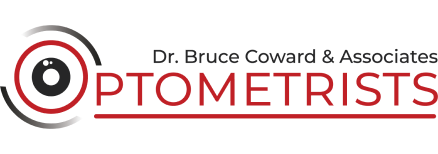OHIP – What’s changing and how can it affect you?

“On September 1, 2023, the Ontario government is changing eyecare coverage for most people over the age of 20. These changes have the support of the Ontario government and the College of Optometrists and are based on scientific evidence, experts’ opinions, and best practices from other provinces. These changes are being made to ensure that those patients who need care the most will have the most access to it.
For further information or to book your next eye exam please contact our offices or visit: https://drbrucecoward.ca/contact-us/ ”
Dr. Bruce Coward – The OHIP details below are from the official Ontario Association of Optometrists website www.ohipupdates.ca and is valid as of September 1st, 2023.
How will this effect ages 19 and younger?
The OHIP coverage will remain the same for this age group after September 1st, 2023.
- Eligible for one OHIP-insured comprehensive eye examination per year.
- Eligible for OHIP-insured “partial examinations” in between regular check-ups for a specific eye or vision problem. For example, a visit to the optometrist to diagnose and treat an eye infection is covered under OHIP for this age group.
- OHIP does not cover second opinions. An examination by a different optometrist to confirm a diagnosis is not covered by OHIP.
How will this effect ages 20 – 64?
Commencing September 1st 2023, patients ages 20 – 64 with one or more of the following potentially sight-threatening conditions is eligible for an OHIP-insured eye examination by one of our optometrists. Only a maximum of one full examination every 12 months.
- Diabetes. A patient with a confirmed diagnosis of diabetes is eligible for an annual OHIP-insured comprehensive eye examination. The optometrist may ask for a list of medications or a letter from a physician to verify the diagnosis of diabetes.
- Glaucoma. A patient with a confirmed diagnosis of glaucoma is eligible for an annual OHIP-insured comprehensive eye examination. A patient who is being examined to determine whether or not they have glaucoma (e.g., because they have risk factors such as elevated eye pressure or a family history of glaucoma) is not eligible for OHIP-insured eye examinations.
- Cataracts. A patient with early cataracts that are not significantly impairing vision (better than 20/40 in the better eye) is not eligible for OHIP-insured eye examinations. However, if during the examination it is determined that the cataract impacts a patient enough that surgery is required, then that examination and referral is covered by OHIP.
- Retinal Disease. A patient with either an acute retinal condition (e.g., a new retinal detachment) or a progressive retinal condition (e.g., macular degeneration) is eligible for an OHIP-insured comprehensive eye examination. A patient with a stable retinal condition (e.g., a longstanding repaired retinal detachment) is not eligible for OHIP-insured eye examinations.
- Corneal Disease. A patient with an acute corneal disease (e.g., a new corneal ulcer) or a progressive corneal disease (e.g., Fuch’s dystrophy) is eligible for an OHIP-insured comprehensive eye examination. A patient with a stable corneal condition (e.g., a longstanding corneal scar) is not eligible for OHIP-insured eye examinations.
- Optic Nerve Pathway Disease. A patient with an acute optic nerve pathway disease (e.g., a new stroke affecting vision) or a progressive optic pathway disease (e.g., a pituitary gland tumor) is eligible for an OHIP-insured comprehensive eye examination. A patient with a stable nerve condition (e.g., a longstanding, stable nerve damage from an old stroke) is not eligible for OHIP-insured eye examinations.
- Uveitis. The condition must be active at the time of the examination for the patient to be eligible for an OHIP-insured comprehensive eye examination. A patient who has had uveitis in the past, but the condition is not currently active is not eligible for OHIP-insured eye examinations.
- Patients taking any of the following medications: Chloroquine, Hydroxychloroquine, Ethambutol, Tamoxifen are eligible for an annual OHIP-insured comprehensive eye examination.
- Sudden onset of strabismus (crossed eyes) due to injury or disease. A patient with a sudden onset of strabismus (crossed-eyes) is eligible for an OHIP-insured comprehensive eye examination. A patient with stable, longstanding strabismus is not eligible for OHIP-insured eye examinations.
Additionally, if a patient is diagnosed with any of the 9 conditions above, they are eligible for a maximum of two OHIP-insured follow-up “partial examinations” annually for the same condition.
Due to research and evidence, conditions of strabismus and amblyopia typically remaining stable after childhood these are no longer eligible conditions for OHIP insured eye exams.
How will this effect ages 65+?
When the new OHIP regulations commence:
- Patients aged 65 or over, with healthy eyes, are eligible for an OHIP-insured eye exam once every 18 months from one of our optometrists.
- Patients aged 65 or above suffering from one or more of the following potentially sight threatening conditions, are eligible for an OHIP-insured comprehensive eye exam once every 12 months with one our optometrists.
- Diabetes. A patient with a confirmed diagnosis of diabetes is eligible for an annual OHIP-insured comprehensive eye examination. The optometrist may ask for a list of medications or a letter from a physician to verify the diagnosis of diabetes.
- Glaucoma. A patient with a confirmed diagnosis of glaucoma is eligible for an annual OHIP-insured comprehensive eye examination. A patient who is being examined to determine whether or not they have glaucoma (e.g., because they have risk factors such as elevated eye pressure or a family history of glaucoma) is eligible for an OHIP-insured comprehensive eye examination every 18 months.
- Cataracts. A patient with cataracts that are significantly impairing vision (worse than 20/40 in the better eye) or requiring a surgical referral, is eligible for an OHIP-insured comprehensive eye examination 12 months after their last one. A patient with early cataracts that are not significantly impairing vision (better than 20/40 in the better eye or not requiring a surgical referral), is only eligible for an OHIP-insured comprehensive eye examination every 18 months.
- Retinal Disease. A patient with either an acute retinal condition (e.g., a new retinal detachment) or a progressive retinal condition (e.g., macular degeneration) is eligible for an OHIP-insured comprehensive eye examination 12 months after their last one. A patient with a stable retinal condition (e.g., a longstanding repaired retinal detachment) is only eligible for an OHIP-insured comprehensive eye examination every 18 months.
- Corneal Disease. A patient with an acute corneal disease (e.g., a new corneal ulcer) or a progressive corneal disease (e.g., Fuch’s dystrophy) is eligible for an OHIP-insured comprehensive eye examination 12 months after their last one. A patient with a stable corneal condition (e.g., a longstanding corneal scar) is only eligible for an OHIP-insured comprehensive eye examination every 18 months.
- Optic Nerve Pathway Disease. A patient with an acute optic nerve pathway disease (e.g., a new stroke affecting vision) or a progressive optic pathway disease (e.g., a pituitary gland tumor) is eligible for an OHIP-insured comprehensive eye examination 12 months after their last one. A patient with a stable nerve condition (e.g., a longstanding, stable nerve damage from an old stroke) is only eligible for an OHIP-insured comprehensive eye examination every 18 months.
- Uveitis. A patient with uveitis that is active at the time of examination is eligible for an OHIP-insured comprehensive eye examination 12 months after their last one. A patient who has had uveitis in the past, but the condition is not currently active is only eligible for an OHIP-insured comprehensive eye examination every 18 months.
- Patients taking any of the following medications: Chloroquine, Hydroxychloroquine, Ethambutol, Tamoxifen are eligible for an annual OHIP-insured comprehensive eye examination.
- Sudden onset of strabismus (crossed eyes) due to injury or disease. A patient with a sudden onset of strabismus (crossed-eyes) is eligible for an OHIP-insured comprehensive eye examination 12 months after their last one. A patient with stable, longstanding strabismus is only eligible for an OHIP-insured comprehensive eye examination every 18 months.
Patients aged 65 and over are eligible for a maximum of two OHIP-insured “partial examinations” in between regular check-ups if needed. For example, a patient with glaucoma is eligible for two additional OHIP-insured visits per year to have their eye pressures checked.
Please note that all patients are welcome to book with us at any time, however our regular eye exam fees will apply, and they would need to bill private insurance or pay directly.
What to do next:
If you have any questions about the new OHIP coverage that is commencing on the 1st of September 2023, get in touch with us today and we can help. In the meantime, don’t forget to book your next eye exam with Dr Bruce Coward and Associates at any of our locations in Trenton, Belleville, Brighton and Picton!


